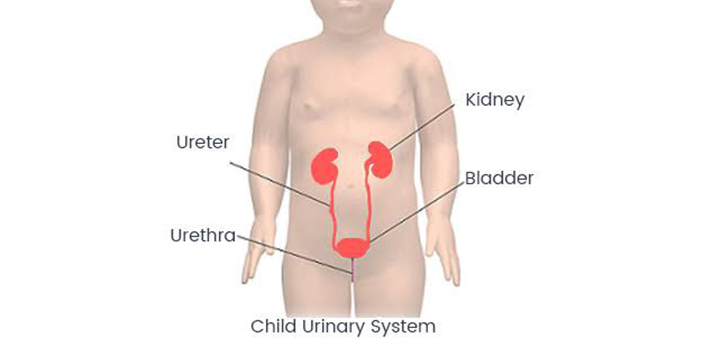Services
Paediatric Urology

Pediatric urologists are surgeons who can diagnose, treat, and manage children’s urinary and genital problems.
Pediatric Hernia
Hernias can occur at any age but are most common in newborns but may not be noticeable for several weeks or months after birth. When your child has an inguinal hernia, you can usually see a bulge in the groin or scrotum. The bulge will typically come and go. It may get bigger after your child is straining or crying.
Pediatric Hydrocele
Hydrocele occurs in children is due to the seeping of fluid from the abdominal cavity into the scrotal sac. Surgery has to be performed if hydrocele persists after the age of 2 years.
Circumcision
Circumcision is the surgical removal of the skin covering the tip of the penis. The procedure is fairly common for newborn boys in certain parts of the world, including the United States. Circumcision after the newborn period is possible, if indicated.
Undescended Testis
Also known as cryptorchidism. It is the failure of the testis to descend into the scrotal sac. There is a possibility of the testis to descend spontaneously up to the age of 6 months Delayed surgery has the potential impairment of fertility in adulthood and increases the chances of testicular cancer. Open orchiopexy is the surgery performed when the testis can be felt in the inguinal region. In orchiopexy, a small incision is taken and testis is guided through it from the inguinal region to the scrotal sac. Laparoscopic orchiopexy is performed if the testis is not felt in the inguinal region.
Torsion Testes
Testicular torsion is an emergency condition where the testes twist around itself leading to the blockage of the blood supply. Due to the absent blood flow, the testes become necrotic (black). To prevent this the child requires to undergo emergency scrotal exploration with detorsion of testes (if the testes are still viable) or orchiectomy (removal of testes) if the testes are black and non-viable. The child presents with sudden pain and swelling over the affected scrotum. On examination, the scrotum appears red, hard, and tender. The diagnosis is confirmed by USG scrotum with Doppler. It is advisable to undergo the surgical procedure at the earliest to prevent the testes from undergoing necrosis.
Hypospadias
Hypospadias is a condition where the child passes urine from the undersurface of the penis this is usually also associated with bending (chordae) of the penis. The opening may be presents anywhere just before the tip to as far as the penoscrotal junction.
Depending on various factors a single or two-staged surgical procedure is advised for the correction of this condition. The operation is recommended to be performed at six months of age. If a staged procedure is planned the second stage operation is performed at least six months after the first procedure. The end result is that the child passes urine from the desired position of the penis. Complications like urethra- cutaneous fistula, meatal stenosis, etc may develop which can be treated by a separate surgical procedure.
Pelviureteric Junction Obstruction
This is a condition where there is a block at the junction of the pelvis of kidney and ureter (the tube carrying the urine to the bladder) due to which the urine that is produced by the kidney is not completely emptied leading to the pelvictasis (dilation of the renal pelvis) in turn causing damage to the kidney due to backpressure effect.
The stagnated urine also becomes a source for infection further leading to damage to the kidney reducing its function. Therefore it is essential to correct this surgically. The part of the kidney pelvis along with the narrow part (partial block) & ureter is cut and re-sutured to widen the junction of the renal pelvis and ureter to allow easy flow of urine to ensure proper anastomosis.





